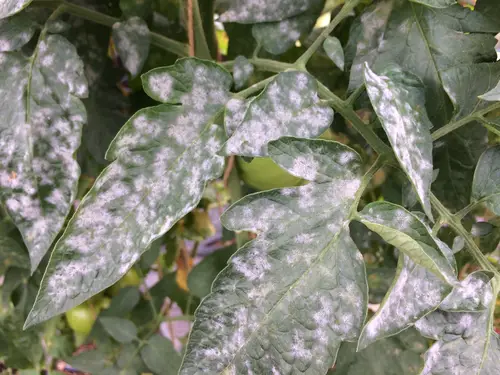White spots under plant leaves are a common problem that many gardeners and plant enthusiasts face. These spots can be caused by a variety of factors, including disease, pests, and environmental factors. Identifying the cause of white spots is crucial in determining the appropriate treatment and prevention methods.
Common causes of white spots under plant leaves include fungal diseases such as powdery mildew, which is a common problem for many plants.
Other factors that can cause white spots include insect infestations, nutrient deficiencies, and excessive moisture. It is important to identify the cause of the white spots to determine the appropriate course of action.
White spots under plant leaves can have a significant impact on plant growth and yield, making it crucial to address the problem as soon as possible.
Preventative measures such as proper plant care, regular inspections, and maintaining a healthy environment can help minimize the risk of white spots. Treatment options such as fungicides, insecticides, and nutrient supplements can also be effective in managing white spots.
Key Takeaways
- Identifying the cause of white spots is crucial in determining the appropriate treatment and prevention methods.
- White spots can be caused by a variety of factors, including disease, pests, and environmental factors.
- Preventative measures and treatment options can be effective in managing white spots and minimizing their impact on plant growth and yield.
Also don’t miss:
Identifying White Spots Under Plant Leaves
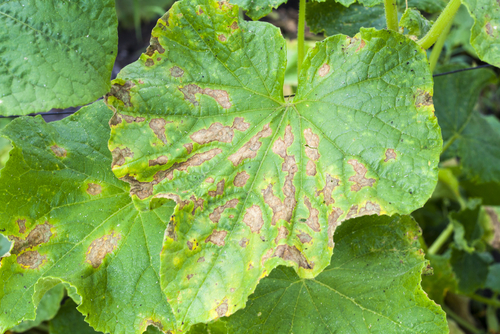
White spots under plant leaves are a common plant disease that can affect a wide variety of plants. The white spots are usually circular and powdery in appearance, and they can appear on both the upper and undersides of leaves. The spots can also appear on stems and sometimes fruit.
One of the most common causes of white spots under plant leaves is powdery mildew. Powdery mildew is a fungal disease that thrives in warm, humid conditions. The disease is characterized by the appearance of white, powdery spots on the leaves, stems, and fruit of infected plants.
Another cause of white spots under plant leaves is downy leaf spot. This disease is caused by a fungal pathogen that thrives in cool, moist conditions.
Early on, downy leaf spot presents itself as small, white, fuzzy areas on the undersides of the leaves, and pale green spots on the upper side. If some of those white spots on the plant leaves have fused together to become blotches, they should look like white powder.
White leaf spot fungus is another cause of white spots under plant leaves. It is a fungal disease that affects a wide variety of plants. The symptoms of white leaf spot include the appearance of white spots on the leaves, which can eventually spread to the stems and fruit of the plant.
Treatment for white leaf spot involves the removal and destruction of infected plants. Prevention is the best method for control. Use only disease-free seeds or resistant cultivars. Practice crop rotation, rotating cole crops every 3 years, and excellent sanitation by disposing of infected plant material.
Mealybugs can also cause white spots on plant leaves. Mealybugs are small, white, fuzzy insects that feed on the sap of plants. If you have found the white residue on plant’s leaves that indicates a mealybug infestation, immediately isolate the plant.
One mealybug home pest control is to scrape away any white residue and spots on plants leaves that you can find.
White Spots Under Plant Leaves – 4 Common Problems
White spots on plant leaves are a common issue that can be caused by a variety of factors. Here are some of the most common causes of white spots on plant leaves:
1. Powdery Mildew
Powdery mildew is a fungal disease that can cause white spots to appear on plant leaves. It is caused by a variety of fungi that thrive in high humidity and low light conditions. Powdery mildew can be easily identified by the white, powdery growth on the surface of the leaves. It can also cause yellowing and curling of the affected foliage.
2. Fungal Infection
Fungal infections can also cause white spots to appear on plant leaves. These infections can be caused by a variety of fungi that thrive in warm, moist environments. Symptoms of a fungal infection include white spots on the leaves, as well as yellowing and wilting of the affected foliage.
3. Mealybugs, Whiteflies, Scale, and Spider Mites

White spots on plant leaves can also be caused by insect infestations. Mealybugs, whiteflies, scale, and spider mites are all common pests that can cause white spots to appear on plant leaves. These pests can also cause other symptoms, such as sticky residue on the leaves, egg sacs, and webbing.
4. Environmental Factors
Environmental factors can also cause white spots to appear on plant leaves. For example, high humidity can cause white spots to form on the leaves of certain plants. Lack of air movement and poor lighting conditions can also contribute to the formation of white spots on plant leaves.
Effects of White Spots on Different Plants
White spots under plant leaves can have different effects on various types of plants. Here are some of the effects of white spots on different plants:
1. Trees and Shrubs
White spots on leaves of trees and shrubs can weaken the plants and make them more susceptible to pests and diseases. The spots can also reduce the plant’s ability to photosynthesize, which can result in stunted growth and reduced yields.
2. Flowers and Roses
White spots on flowers and roses can affect the plant’s appearance and reduce the plant’s ability to produce blooms. The spots can also weaken the plant and make it more susceptible to pests and diseases.
3. Buds and Fruits
White spots on buds and fruits can affect the plant’s ability to produce healthy fruit. The spots can reduce the plant’s ability to photosynthesize, which can result in smaller and less flavorful fruit.
4. Vegetables
White spots on leaves of vegetables such as eggplants, tomatoes, and peppers can weaken the plant and reduce the plant’s ability to produce healthy fruit. The spots can also make the plant more susceptible to pests and diseases.
5. Houseplants
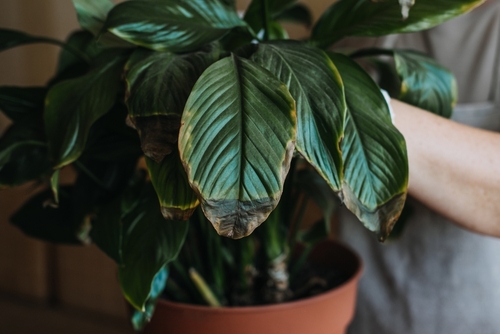
White spots on leaves of houseplants can affect the plant’s appearance and reduce the plant’s ability to photosynthesize. The spots can also weaken the plant and make it more susceptible to pests and diseases.
6. New Growth
White spots on new growth can affect the plant’s ability to photosynthesize and can result in stunted growth. The spots can also make the plant more susceptible to pests and diseases.
7. Nightshades
Nightshades such as eggplants, tomatoes, and peppers are particularly susceptible to white spots. The spots can weaken the plant and reduce the plant’s ability to produce healthy fruit.
How Weather and Environment Influence White Spots
The weather and environment can have a significant impact on the occurrence of white spots on plant leaves. Here are some factors that can influence the appearance of white spots:
1. Moisture
Excessive moisture can create a favorable environment for fungal growth, which can cause white spots on plant leaves. This is because fungi thrive in moist conditions. On the other hand, dry weather can reduce the occurrence of white spots.
2. Temperature
Temperature can also play a role in the formation of white spots. Cooler temperatures can increase the likelihood of white spots, while warmer temperatures can reduce the occurrence of white spots.
3. Air Circulation
Good air circulation is important for preventing the formation of white spots. Poor air circulation can create a stagnant environment that is conducive to fungal growth.
4. Sunlight
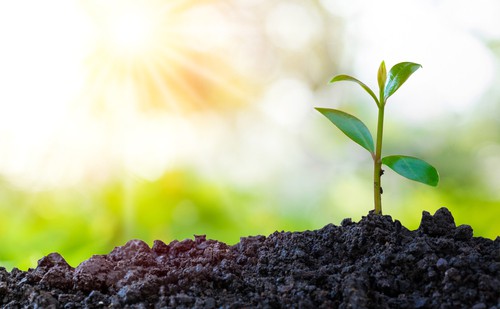
Sunlight is essential for plant growth, but too much direct sunlight can cause stress and damage to the plant, making it more susceptible to white spots. On the other hand, too little sunlight can also lead to the formation of white spots.
5. Other Factors
Other factors that can influence the occurrence of white spots include wind, winter weather, and poor air quality. Wind can cause damage to the plant, making it more susceptible to fungal growth. Winter weather can also create conditions that are conducive to fungal growth. Poor air quality can also contribute to the formation of white spots.
Prevention Strategies for White Spots
Prevention is always better than cure when it comes to plant diseases. Here are some strategies that can help prevent white spots from appearing on plant leaves.
1. Proper Watering
Overwatering or underwatering can cause stress to plants, making them more susceptible to diseases. It’s important to water plants properly and consistently. Ensure that the soil is moist but not waterlogged. Avoid getting water on the leaves, as this can create a humid environment that encourages fungal growth.
2. Good Compost
Using good quality compost can help prevent white spots on plant leaves. Healthy soil supports healthy plants, and good compost provides essential nutrients and beneficial microorganisms that can help plants resist diseases.
3. Adequate Air Circulation
Good air circulation is essential for preventing fungal diseases. Make sure there is enough space between plants to allow for proper air flow. Avoid overcrowding plants, especially in humid conditions.
4. Pruning
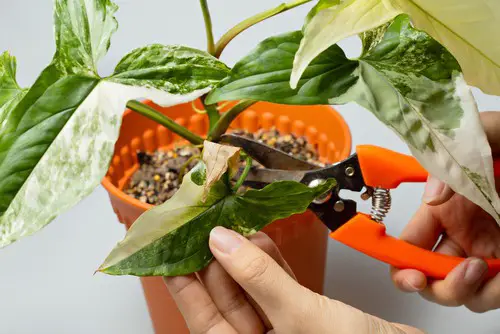
Regular pruning can help prevent the spread of fungal diseases. Remove any infected leaves or branches and dispose of them properly. This can help prevent the disease from spreading to other parts of the plant or to other plants in the area.
5. Encouraging Plant Growth
Healthy plants are less susceptible to diseases. Encourage plant growth by providing the right amount of light, water, and nutrients. Use fertilizers that are appropriate for the plant and soil type. Avoid over-fertilizing, as this can also stress plants and make them more susceptible to diseases.
Treatment Options for White Spots
There are several treatment options available for white spots under plant leaves. The treatment option that works best for a particular plant may depend on the type of white spot and the severity of the infestation. Here are some treatment options to consider:
1. Fungicide
Fungicides are chemicals that can be used to control fungal diseases, including white spots caused by fungus. These chemicals are available in liquid and powder form and can be applied directly to the affected plants. It is important to follow the instructions on the label carefully when using fungicides.
2. Neem Oil
Neem oil is a natural insecticide that can be used to control a wide range of pests, including those that cause white spots under plant leaves. It is safe for most plants and can be used as a preventive measure or as a treatment for existing infestations.
3. Pesticide
Pesticides can be used to control a wide range of pests, including those that cause white spots under plant leaves. It is important to choose a pesticide that is safe for the particular plant being treated and to follow the instructions on the label carefully.
4. Horticultural Oil
Horticultural oils are oils that are derived from plants and can be used to control a wide range of pests, including those that cause white spots under plant leaves. These oils are safe for most plants and can be used as a preventive measure or as a treatment for existing infestations.
5. Mouthwash
Mouthwash can be used as a home remedy to control white spots under plant leaves. It contains alcohol and other ingredients that can kill pests and prevent fungal growth. Mix one part mouthwash with three parts water and spray the affected plants.
6. Sulfur
Sulfur is a natural fungicide that can be used to control white spots caused by fungus. It is available in powder form and can be applied directly to the affected plants. It is important to follow the instructions on the label carefully when using sulfur.
7. Dish Soap and Vinegar
A mixture of dish soap and vinegar can be used as a home remedy to control white spots under plant leaves. Mix one tablespoon of dish soap and one tablespoon of vinegar with one quart of water and spray the affected plants.
8. Copper
Copper is a natural fungicide that can be used to control white spots caused by fungus. It is available in liquid and powder form and can be applied directly to the affected plants. It is important to follow the instructions on the label carefully when using copper.
9. Potassium Bicarbonate
Potassium bicarbonate is a natural fungicide that can be used to control white spots caused by fungus. It is available in powder form and can be applied directly to the affected plants. It is important to follow the instructions on the label carefully when using potassium bicarbonate.
10. Milk Spray
Milk spray is a natural remedy that can be used to control white spots under plant leaves. Mix one part milk with nine parts water and spray the affected plants. The protein in the milk can help prevent fungal growth.
Impact of White Spots on Plant Growth and Yield
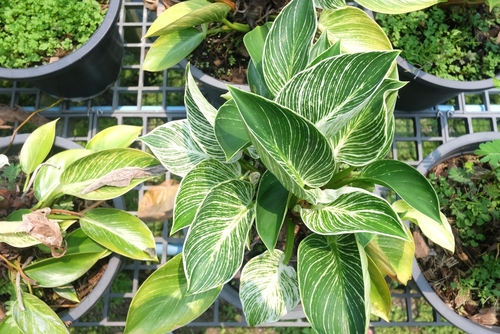
White spots on plant leaves are not only unsightly, but they can also have a significant impact on plant growth and yield. The severity of the impact depends on various factors, such as the type of plant, the severity of the infestation, and the growing season.
Firstly, white spots can damage the leaves of the plant, which can affect its ability to photosynthesize. This can lead to a reduction in the production of new growth, which can ultimately affect the yield of the plant. In severe cases, the entire plant can be affected, leading to stunted growth and even death.
Secondly, white spots can increase spore production, which can lead to the spread of the infestation to other parts of the plant and even to other plants nearby. This can lead to a significant reduction in yield, as well as an increase in the cost of control measures.
Thirdly, white spots can affect the stems and shoots of the plant, leading to a reduction in their strength and ability to support the plant. This can lead to a reduction in yield, as well as an increase in the risk of the plant being damaged by wind or other environmental factors.
Control measures for white spots on plant leaves can include the use of baking soda or other natural remedies, as well as the application of nitrogen-based fertilizers to help boost the plant’s immune system.
It is important to note, however, that prevention is always better than cure, and regular monitoring of plants for signs of infestation is key to preventing the spread of white spots and other plant diseases.
Managing White Spots in Nurseries and Large Scale Plantations
White spots on plant leaves can be a major problem for nurseries and large scale plantations, as they can quickly spread and damage entire crops. Here are some management strategies that can help control and prevent white spots:
Identify and treat pests
White spots on plant leaves can be caused by pests such as aphids, mealybugs, and spider mites. These pests produce honeydew, a sugary substance that attracts ants. Ants can then spread the honeydew to other plants, leading to the formation of white spots.
To manage white spots caused by pests, it is important to identify and treat the pests first. This can be done by using insecticides or natural predators such as ladybugs or lacewings.
Improve plant hygiene
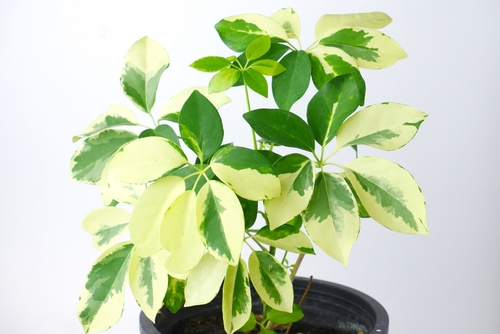
White spots can also be caused by fungal infections such as powdery mildew. To prevent the spread of fungal infections, it is important to maintain good plant hygiene. This includes removing any infected leaves or plant debris, and avoiding overhead watering, which can create a humid environment that is conducive to fungal growth.
Use cotton swabs and alcohol
For nurseries and large scale plantations, it may be impractical to manually remove infected leaves. In such cases, cotton swabs dipped in alcohol can be used to remove the white spots. The alcohol will kill the fungi and prevent further spread.
Use sage as a natural fungicide
Sage is a natural fungicide that can be used to control white spots caused by fungal infections. A solution of sage leaves and water can be sprayed on the affected plants to prevent the spread of the infection.
Frequently Asked Questions
How do I identify the cause of white spots on my plant leaves?
Identifying the cause of white spots on plant leaves can be challenging, as there are several potential culprits. Common causes of white spots include fungal diseases, pests, and environmental factors.
To identify the cause, carefully inspect the leaves and look for any signs of pests or fungal growth. Consider the plant’s environment, including temperature, humidity, and light conditions.
What are some common treatments for white spots on plant leaves?
The treatment for white spots on plant leaves will depend on the cause. For fungal diseases, treatments may include removing infected leaves, applying fungicides, or adjusting the plant’s environment to reduce humidity. For pest infestations, treatments may include applying insecticides or using natural predators to control the pests.
Can nutrient deficiencies cause white spots on plant leaves?
Yes, nutrient deficiencies can cause white spots on plant leaves. Calcium, magnesium, and zinc deficiencies can all cause white spots or patches on leaves. To prevent nutrient deficiencies, ensure that the plant is receiving the appropriate amount of fertilizer and that the soil pH is within the appropriate range.
Are white spots on indoor plant leaves harmful to humans or pets?
In most cases, white spots on indoor plant leaves are not harmful to humans or pets. However, some fungal diseases can be harmful if ingested or inhaled. If you are concerned about the safety of your indoor plants, consult with a veterinarian or plant expert.
What are some preventative measures to avoid white spots on outdoor plant leaves?
To prevent white spots on outdoor plant leaves, ensure that the plant is receiving appropriate sunlight, water, and nutrients. Avoid overwatering the plant, as this can create a humid environment that is conducive to fungal growth.
Regularly inspect the plant for signs of pests or disease, and remove any infected leaves promptly.
How do I remove white fungus from the underside of a plant leaf?
To remove white fungus from the underside of a plant leaf, gently wipe the affected area with a damp cloth or cotton swab. Be careful not to damage the leaf or spread the fungus to other parts of the plant. If the fungus persists, consider applying a fungicide or consulting with a plant expert.

Hey, I’m Lisa and I’ve been an avid gardener for over 30 years. I love writing, talking and living in the garden! Feel free to connect with me on my socials below

